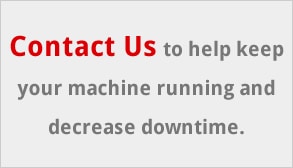Leasing is one of the fastest-growing ways of equipment financing in business today. A recent Gallup survey found that 80% of U.S. businesses lease a portion of their equipment. The list of companies leasing equipment ranges from Fortune 500 to the corner store.
Financial Reporting
Financial reporting of equipment acquisitions is critical because the equipment must be capitalized as an asset on the balance sheet with a corresponding liability for any debt associated with the transaction. Depreciation and interest expense, if applicable, represent the financial statement cost of acquiring the equipment.
Cash Management
Traditional bank financing often only covers only 80-90% of equipment cost. Leasing usually requires only one or two rental payments in advance – and can include all other acquisition costs, including operating materials. Retained cash can be used for more profitable working capital requirements. All operating leases defer a significant portion of the total equipment cost to the end of the lease term, which makes monthly payments more affordable than conventional loan financing.
Capital Budget Constraints
Leasing usually avoids the multi-level capital budget approval process. Leases can be funded through an Operating Budget, Capital Budget, or a combination of both.
Deductibility of Rentals
Operating Lease payments are fully deductible against income for federal income tax purposes, which provides a significant tax benefit when compared to traditional debt financing.
Negative Impact of Additional Purchases
Recent tax law changes may penalize a company for purchasing equipment. A business that is approaching the Alternative Minimum Tax (AMT) or the mid-quarter depreciation convention will be penalized when purchasing new equipment by having to pay additional taxes due to the loss or reduction in value of certain tax benefits.
Use Verses Ownership
The use of the equipment is much more important than a document conveying title, as it is the use of the equipment that produces profit – not ownership. Leasing generally results in lower acquisition cost, which implies greater profitability.
Non-Restrictive Financing
Banks often build restrictive loan covenants into business loan agreements, which typically include current ratio, debt-to-equity ratio limits and other minimum measures of profitability. In theory, even a relatively minor technical violation of any of these criteria may influence the lender to request that the loan obligation be repaid or restructured.
